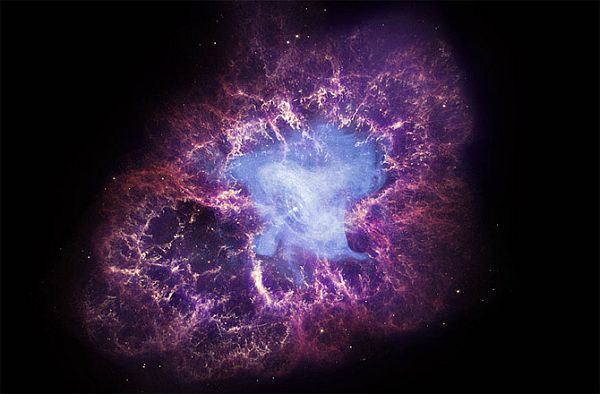Stellar physicists believed that escalation of interstellar space magnetic field could be an offshoot of the cosmic turbulence. Magnetic field pervades unanimously throughout universe however, there was no such thing around the beginning of Big Bang, which means the force has arisen from somewhere.
In order to look for the answer, researchers at Rutherford Appleton Laboratory, UK simulated creation of supernova, a giant star with 60k billions times more powerful shafts, these rays were higher than the laser pointers. The study was based on identifying magnetic fields in the deposits of Cassiopeia A, a supernova. The magnetic force was more than 100 times strong with respect to the adjoining interstellar space.
Physics remains same at Micro & Macro Level
Gregori one of the lead researcher said that the study based on the experimental analysis of lab or room level would have the same equation with that of objects across light years. In order to prove his point, he expatiated that physics involved in the waves in a container is quite similar to the waves observed in an ocean. Therefore, the experiment performed in the lab would correspond to the happenings of events like the Cassiopeia A supernova, one of the most energetic events.
Extraterrestrial space accounts for quadrillionths of a gauss to numerous microgauss across galaxies and related clusters. To make things slightly simpler, let’s understand that 50 gauss is the magnetic flux density that is observed in any refrigerator. Sun, the existing largest star accounts for some thousands of magnetic flux density while dense stars like Neutrons show signs of much bigger magnetic fields, which is more than quadrillions of gauss.
Augmentation of Magnetic Flux by Turbulence
During 2012, Gregori along with a team of researchers invoked weak magnetic field arising from zero initial conditions by employing the famous Biermann battery mechanism. Now the question that hovered above them was what leads to these seed fields morph into enormous sizes of magnetic flux in interstellar space. Working upon their previous findings and along with the collaboration of 11 institutions across the globe, Gregori’s team converged upon the understanding of the augmentation of magnetic flux by turbulence.
In order to conduct an experiment, they prepared a low-density gas room, where a small carbon rod was placed. Beams of laser were flashed onto this rod causing it to detonate, which gave rise to a blast that dispersed all through the gas. The researchers observed as the explosion was moving across the lattice, it was becoming highly asymmetrical and turbulent; the phenomenon was akin to Cassiopeia’s images.
Physics Simulation
Researchers knew all the physical variables that were involved including temperature, density and velocities. Hence, simulations were created accordingly that consumed nearly 20 million processing hours on both the supercomputers, Mira and Intrepid. With a reliability of 20 times faster speed relatively, Mira per second calculations went around 10 quadrillion.
Calling the simulation as “treasure trove”, researchers believe that it has it potential of answering the physics behind the magnetic flux occurring at interstellar space level. It can be looked from different angles like velocity, density or pressure.
This happens to be a major leap towards the understanding of universe. The more we try to comprehend the workings of the cosmos, more we get awestruck by the fantastically woven marvelous universe.
Source: Science Daily





